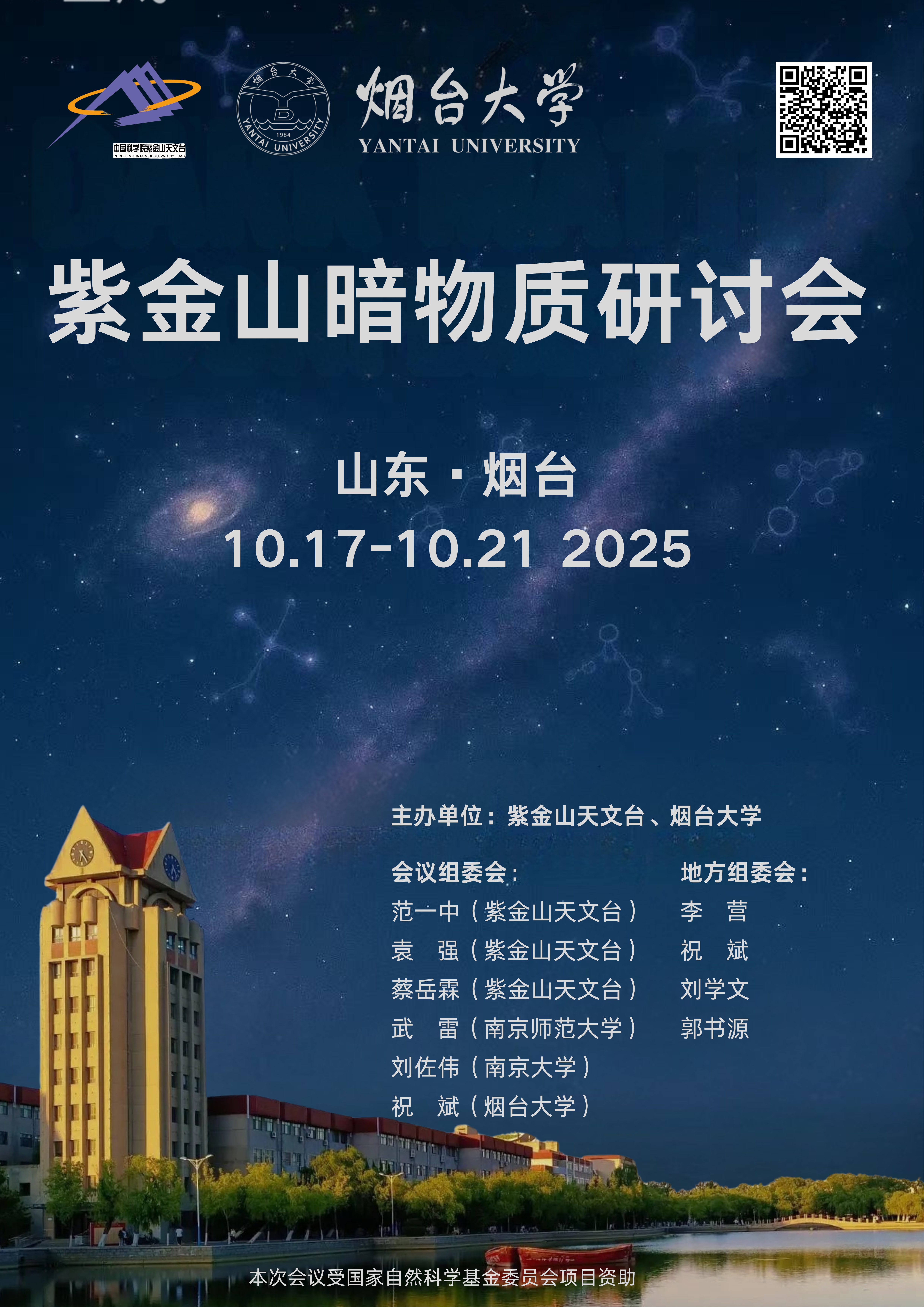2025年紫金山暗物质研讨会
第1会议室
烟台东山宾馆 6 号楼
尊敬的各位同仁:
暗物质研究是当代基础科学的核心议题之一,探索暗物质本质将进一步深化我们对物质起源、物理规律及宇宙演化的认知。近年来,我国在暗物质研究领域取得了国际领先的成果:成功发射首颗暗物质科学卫星DAMPE,建成世界最深地下实验室——锦屏地下实验室,开展CDEX 和PandaX 直接探测实验,利用FAST 射电望远镜研究暗物质属性,并在理论和暗物质探测领域涌现出一批突破性进展。为促进学科交叉、推动国内外合作,我们特举办紫金山暗物质研讨会。本系列研讨会由中国科学院暗物质与空间天文重点实验室2019 年发起,之后由南京师范大学在2023 年、南京大学于2024 年陆续举办。现已成为国内暗物质领域推动粒子理论、实验物理与天文观测等学科交叉的重要学术交流平台。
为交流最新科研成果,我们将于2025年10月17日至21日在山东烟台举办2025年紫金山暗物质研讨会,诚邀本领域的实验和理论同行,共同探讨最新的暗物质探测结果、暗物质理论模型进展、新的暗物质探测方法、与暗物质相关的新物理研究进展,开展广泛而深入的学术讨论与思想碰撞,进一步促进理论物理与实验物理的融合,以期开启更多富有成效的科学合作,并取得更多有意义的研究成果。
本次会议由紫金山天文台和烟台大学共同举办,烟台大学承办。让我们在金秋十月相聚山海烟台,共探物理前沿!
会议基本信息:
会议地点:烟台东山宾馆 5 号楼
会议时间:2025年10月17日-21日(17日报到,18-20日会议,21日离会)
会议注册:截止日期为2025年9月30日。
注册费用:研究人员及博士后:1500元/人,学生及其他人员:1000元/人
食宿安排:本次会议统⼀安排住宿,会议期间交通费和⻝宿费⾃理。
会议组委会:
范一中 紫金山天文台
袁 强 紫金山天文台
蔡岳霖 紫金山天文台
武 雷 南京师范大学
刘佐伟 南京大学
祝 斌 烟台大学
地方组委会:李营,祝斌,刘学文,郭书源
会议联系人:祝斌 (18354570274, zhubin@mail.nankai.edu.cn),刘学文 (13102192035, xuewenliu@ytu.edu.cn),郭书源 (18562180936, shyuanguo@ytu.edu.cn)


